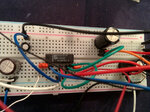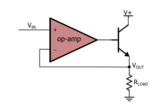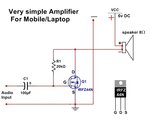Thayne
Member level 3
I made my first circuit the other day. It is with a TDA1517. All parts were salvaged from the garbage. I was just looking up datasheets as I took things apart until I found something to build. The circuit is the one provided on the chip's data sheet. This is my first "real" circuit ever. I was really happy when I turned it on and it worked -- especially because it was all made from garbage.
Now, I want to ask a question about something. I know about speakers and music and I build my own computers, and play around with ESP32s and other dev boards hooking up sensors and programming, etc. What I don't know are actual "real" circuits (not other peoples' circuits plugged into other peoples' circuits). That said, I want to get a little more power out of this amp. Just a tiny bit more so I can here it where I live (in Salvador, Brazil, in the city, a block from the beach).
The power source is already sorted out according to the datasheet. The speakers I used vary from 2 ohm to 8 ohm and changing things here isn't going to do it.
Someone suggested to get another, identical chip and run both in bridged mode. That is a great idea, but I found this chip in the garbage and I doubt I will find another. Ordering a new chip defeats the whole purpose of this project also (why not order everything I want then?).
So, is it possible to add power resisters to this circuit? I have a lot of transistors of all kinds from salvage. If so, what kind of circuit would that look like? Would it need its own separate power source?
I don't want to give up. This is fun for me, not a job.
Thanks for any help!
Now, I want to ask a question about something. I know about speakers and music and I build my own computers, and play around with ESP32s and other dev boards hooking up sensors and programming, etc. What I don't know are actual "real" circuits (not other peoples' circuits plugged into other peoples' circuits). That said, I want to get a little more power out of this amp. Just a tiny bit more so I can here it where I live (in Salvador, Brazil, in the city, a block from the beach).
The power source is already sorted out according to the datasheet. The speakers I used vary from 2 ohm to 8 ohm and changing things here isn't going to do it.
Someone suggested to get another, identical chip and run both in bridged mode. That is a great idea, but I found this chip in the garbage and I doubt I will find another. Ordering a new chip defeats the whole purpose of this project also (why not order everything I want then?).
So, is it possible to add power resisters to this circuit? I have a lot of transistors of all kinds from salvage. If so, what kind of circuit would that look like? Would it need its own separate power source?
I don't want to give up. This is fun for me, not a job.
Thanks for any help!




